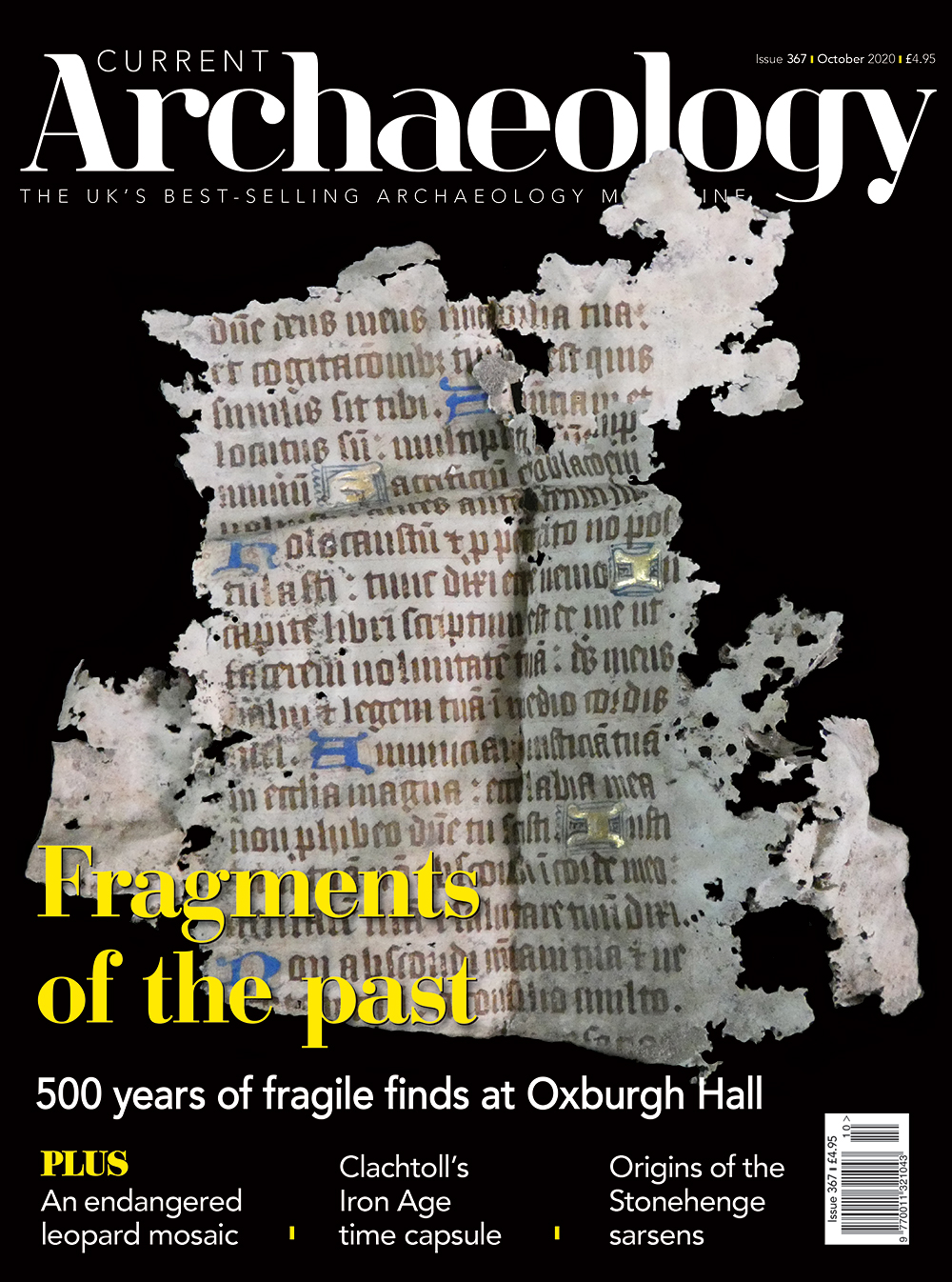Our cover feature takes us to the lofty attic spaces of a grand country house: Oxburgh Hall in Norfolk, where ambitious conservation work has revealed a wealth of fragile finds spanning 500 years, including the astonishing illuminated manuscript page that appears on the front of this issue.
/nSome 200 miles from Oxburgh’s red-brick splendour stands an equally imposing but rather more ancient construction: the Neolithic remains of Stonehenge. Last month, we discussed the latest thinking about the Welsh origins of the monument’s bluestones – now cutting-edge scientific research has pinned down the most likely source of its larger sarsens.
/nFrom towering trilithons to magnificent mosaics, we also pay a visit to the 4th-century Roman villa that once stood at Dewlish in Dorset. Its ornate floors included a strikingly realistic depiction of a leopard, now threatened with export. We discuss the fragment’s unusual imagery, and the quest to save the ancient artwork for the nation.
/nThere are dramatic stories to tell in our fourth feature too; 2,000 years ago, an Iron Age community in the north-west Highlands fled a fire that was consuming the stone tower, or broch, that they called home. Beneath the resulting wreckage, though, a time capsule of undisturbed material was preserved for modern archaeologists to explore.
/nOur fifth feature (a bumper issue of CA this month!) traces literal pathways through the past, considering how prehistoric populations interacted with their natural surroundings, and how far we can reconstruct their journeys.
/nFinally, we conclude our two-part exploration of Anglo-Saxon studies, discussing their current resonance and future relevance.
Current Archaeology 367
In this issue:
– Fragments of the past: 500 years of fragile finds at Oxburgh Hall
– An endangered leopard mosaic
– A unique glimpse into the Iron Age: excavating Clachtoll Broch
– Sourcing the sarsens: a Stonehenge mystery solved?
– Measuring human mobility in prehistory
– Anglo-Saxon studies in 2020 and their prospects
Plus: News, Reviews, Science Notes, Heritage from Home, Sherds, and more!
£6.95
Availability: 15 in stock
Description
Additional information
| Weight | 0.178 kg |
|---|---|
| Rest of World Delivery | £2 |
| Volume | Volume 31 |
| Published Year | 2020 |
| Cover Date | Oct-20 |
| Volume Name | Volume 31 Issue 7 |

